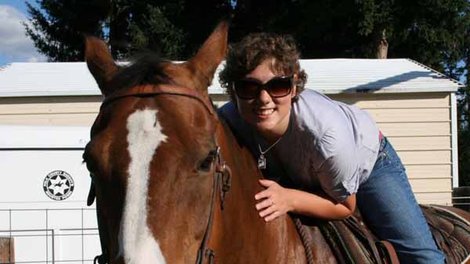SALEM -- A state analysis shows Oregon has a high rate of a childhood bone cancer that has caused worry in a West Salem neighborhood where five children in recent years were diagnosed with the disease and three have died.
Over a five-year span, Oregon was tied with Utah for the second highest rate of childhood osteosarcoma, behind Idaho, according to an analysis done by the Oregon Health Authority and made public by Rep. Vicki Berger of Salem.
But the state epidemiologist, Dr. Katrina Hedberg, cautioned against reading too much into such sometimes-random rankings, the Statesman Journal (http://stjr.nl/1gKMVUa) reported.
Looking at this gives us food for thought, but it's hard to draw any conclusions about what this means, Hedberg said.
A U.S. Environmental Protection Agency investigation of West Salem soils found nothing that could cause the cluster of cases. The American Cancer Society says there is no known cause for osteosarcoma.
The state agency prepared the analysis at Berger's request. She said she was seeking a broader context for the investigation into the West Salem cases.
The analysis said that between 2006 and 2010, Oregon's rate of the rare bone cancer was 6.8 cases per million children 18 and younger. Utah's was the same. Idaho's rate was 7.9 cases per million. The national rate was 4.9 cases per million children over the same period.
OHA's analysis shows that there were 33 cases of childhood osteosarcoma in Oregon during the period, with highest rates in Polk, Tillamook and Crook counties. The rate in Salem's county, Marion, was lower. Because the Health Authority's analysis covers 2006 through 2010, not all of the West Salem cases are included. The West Salem cases came from 2008 through 2012.
Hedberg said the differing spans are because more recent data in the cancer registry is considered tentative.
The cases don't get reported to (the cancer registry) the day they're diagnosed, Hedberg said. Getting a finalized number of cases often takes a year or so after diagnosis.
The release of the analysis was marked by confusion. The state agency said at first that the report wouldn't be released because of the federal law protecting individual medical information. Then it said the analysis would be shared with lawmakers, but not families or the public.
On Tuesday night, Berger released the report. On Wednesday afternoon, the agency posted the data. Spokeswoman Susan Wickstrom said it had intended to release the report all along and cited the federal law before officials knew exactly what their report would contain.
Just the thought that we would be holding something back from the parents, when we want them to have as much information as we can. she said. It's just really confusing, and we wanted to err on the side of protecting people's confidentiality.


